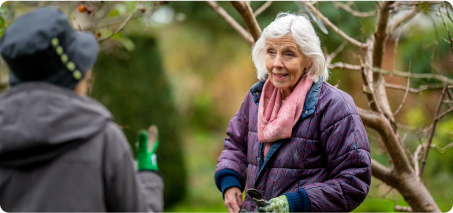For many people, live in care is an ideal solution when they reach the stage of being unable to look after themselves without help. Although some individuals are happy to move into residential care, many prefer to remain in the comfort of their homes. For those clients, live-in care provides the support and companionship needed without the upheaval of moving out of their property and away from neighbours and friends.
If you are considering live-in care for yourself or a loved one, you will want to ensure that the care provided will be suitable and meet appropriate standards. So it is reassuring to know that Lifted Care services are regulated by the Care Quality Commission (CQC). The CQC regulations applying to the provision of live-in care ensure that our services are delivered to the required standard. In fact, we exceed the requirements in many ways.
The CQC is an independent body responsible for regulating, monitoring and inspecting health and social care in England, including various settings, from care homes to hospitals and GP practices. The CQC conducts frequent inspections to review the quality of services provided to ensure your loved ones are getting the appropriate care. The inspected organisations are awarded ratings, and the results of the assessments are published on the CQC website. The ratings must also be displayed where they are easy to find on the care provider’s website. At Lifted Care, we are proud to have been awarded a Good rating by the CQC at our most recent inspection. That signifies that the Lifted Care team are meeting the CQC’s expectations in terms of care quality.

Do Live in care
regulations cover all
Live in care?
Live-in care is sometimes referred to as domiciliary care. It is generally available through two routes – direct from a care provider or via an agency which will put customers in touch with carers. Live-in care offered by care providers must be regulated by the CQC when dealing with person-centred care such as washing, dressing, etc. It is advisable to check to see the details of the CQC registration before dealing with your live-in carer provider.
However, an agency who provides an introduction service i.e., introduces a carer to a family to help with their care needs does not need to be regulated by the CQC.
What are the benefits of regulated care?
As a regulated carer, Lifted Care is the direct employer of the carers who support you or your loved one in your home. Regulated employers cover all carers’ costs and are likely to offer more training for their staff. At Lifted Care, we manage and train all the carers in our team, ensuring your loved ones receive the best possible support.
What are the benefits of regulated care?
As a regulated carer, Lifted Care is the direct employer of the carers who support you or your loved one in your home. Regulated employers cover all carers’ costs and are likely to offer more training for their staff. At Lifted Care, we manage and train all the carers in our team, ensuring your loved ones receive the best possible support.
Live-in care regulations also ensure that carers’ rights are protected. Providing live-in care is a rewarding profession, but it is also very demanding, and carers who live with a client full-time have specific rights relating to breaks and annual leave.
At Lifted Care we value all our employees, and we want to make sure that their needs are considered. Carers must have time to relax and take a break to ensure they can offer the best possible care.
How is care assessed?
Standards of care are assessed through visits and inspections. Performance ratings are awarded for various aspects of how care providers, including Lifted Care, operate and the safeguarding arrangements when working in people’s homes. An inspection can involve an in-person visit to meet with clients and family members as well as meeting with carers and management. CQC inspectors review the care provider’s policies, procedures, and records. They will also observe care given at a client’s home. A rating is awarded by the CQC that provides an overall assessment of the quality and safety of the care provided.
Inspections are carried out on a random sample basis, so it will not necessarily be the case that every carer from a care provider has been directly inspected. However, the inspection includes a review of recruitment processes and procedures for dealing with complaints and other issues. This helps to ensure consistent service standards are maintained across all carers employed by a care provider.

What do CQC assessments cover?
The CQC is responsible for ensuring that specific safety and quality standards are met in the provision of care. This includes a set of fundamental standards which cover the following areas:
Following an assessment, the CQC inspectors will prepare a report of their findings, and this will include an overall rating. The CQC live-in care assessment results are published on the CQC website, ensuring they are widely accessible. You, therefore, have the reassurance of knowing how recently our care services have been assessed and how satisfied the CQC was with Lifted Care.
Ratings below Good are given to companies requiring improvements to their practices and the care provided and where urgent remedial action must be taken. If a care provider fails to meet the requirements of the fundamental standards, the CQC will award the Requires Improvement rating and advise on issues that need to be addressed. If the failings are more serious, the provider will be rated Inadequate, and the CQC has the authority to suspend the care provider. The suspension will not be lifted until they are satisfied that the issues identified have been resolved. These measures ensure that care providers take the standards seriously, as the CQC has the power to take corrective action when needed.
It’s simple to get started
Speak to our experts
Our care experts assess your loved one’s needs and together you design the support that’s right for you.
Get Lifted
We’ll match you with our Carers and get started. We’re here
to help every step of the way.


